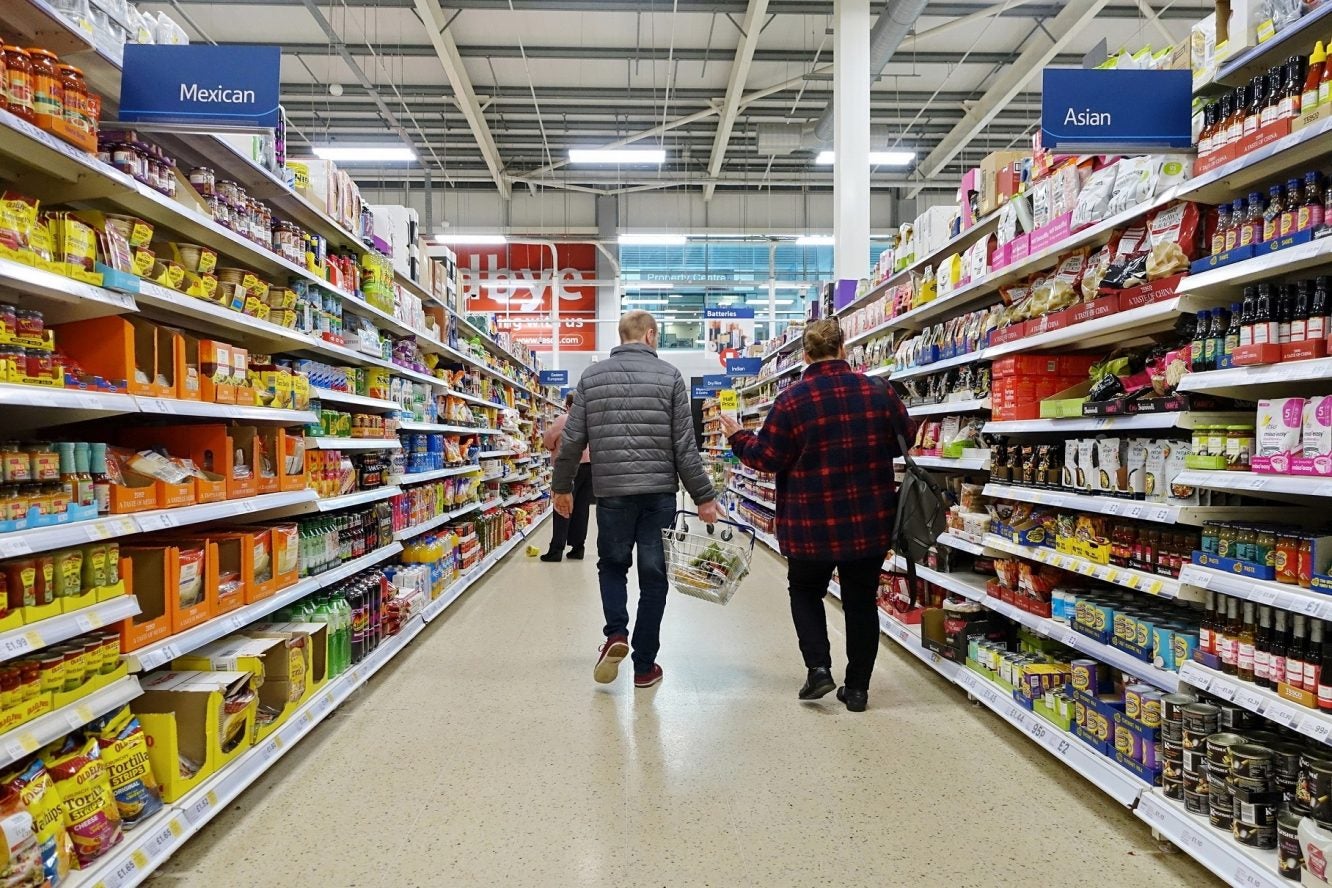
The latest UK inflation figures have revealed that grocery price increases are easing.
Data provided today (20 September) by the government’s Office for National Statistics (ONS) show the Consumer Price Index for food and non-alcoholic beverages slowed to a 13.6% increase in August, on an annualised rate, compared to 14.9% in July.
On a monthly basis, food inflation pulled back to 0.3%, compared to 1.5% in August last year.
The ONS said the easing in the annual rate for food and non-alcoholic beverages between July and August was driven by relatively small price movements from seven of the 11 detailed classes. The largest downward contributions came from the milk, cheese and eggs, vegetables, and fish categories.
“Within milk, cheese and eggs, the downward effects came principally from milk and cheese, with prices for these products falling slightly between July and August this year, compared with larger price rises between the same two months a year ago. This has led to the annual rate for milk, cheese and eggs easing to 15.3% in the year to August 2023, down from 18.7% in July,” it said.
The overall price of vegetables fell between July and August, compared with a rise between the same two months of 2022. As a result, the annual rate eased from 16.7% in July to 14.0% in August.
Similarly, fish prices fell this year but rose a year ago, leading to a slowing in the annual rate from 13.4% in July to 6.8% in August.
Karen Betts, chief executive of industry body the Food and Drink Federation, said: “It’s encouraging to see food and drink price inflation fall again this month to 13.6%. However, it remains at historically high levels and our industry is very conscious of the pressure this is putting on household budgets.
“The reason inflation has not yet fallen further is because the costs of food production remain high, including ingredients, energy, transport and labour. While commodity prices are generally falling, they remain 22% higher than they were pre-pandemic, with persistent inflation in some, like sugar and olive oil.
“Food and drink manufacturers continue to do all they can to keep prices down for consumers while paying a fair price to their suppliers. The pressure on businesses in our sector is very visible in the high rate of insolvencies in the first half of 2023, which were 132% higher than during the whole of 2019.”
Kate Nicholls, chief executive of fellow trade body UKHospitality, which represents foodservice businesses, said: “Inflation slowing at a glacial rate will leave hospitality businesses incredibly concerned ahead of next month’s crucial figures, which determine the annual rise in business rates.
“In the current economic climate, rates rising with inflation, coupled with reliefs ending, would be catastrophic for businesses. It is unthinkable for the government to press ahead with its current plans, which will mean an almost billion-pound bill for the sector.”
Against predictions, the overall rate of inflation also fell, to 6.7% from 6.8% in July, aided by the slowdown in food price rises.
However, the UK still has the highest inflation rate among G7 economies.
Grant Fitzner, chief economist at the ONS, told UK broadcaster the BBC that inflation remained “a mixed picture”, with the price of some items such as bread and cereals still going up, while others are falling.
“So in the latest month we’ve seen falls in fish, in oils and fats and in vegetables,” he said.
Fitzner added food manufacturers are paying less for food than a year ago and said this is “starting to pass through to consumers”.
